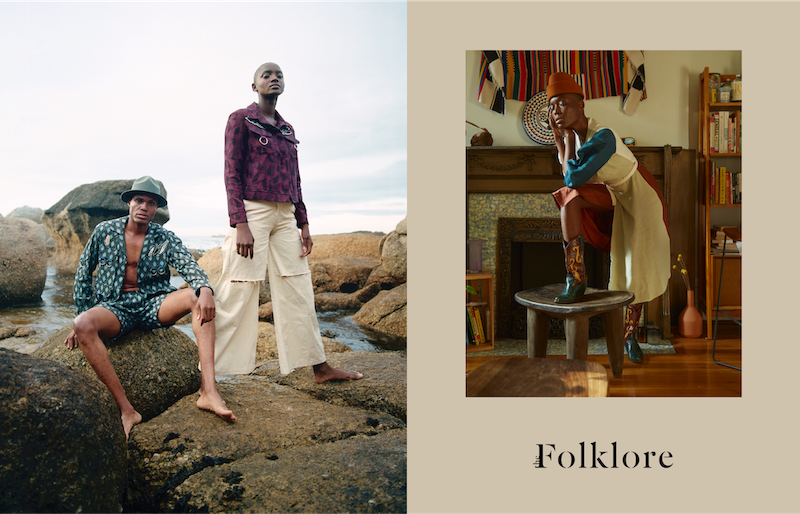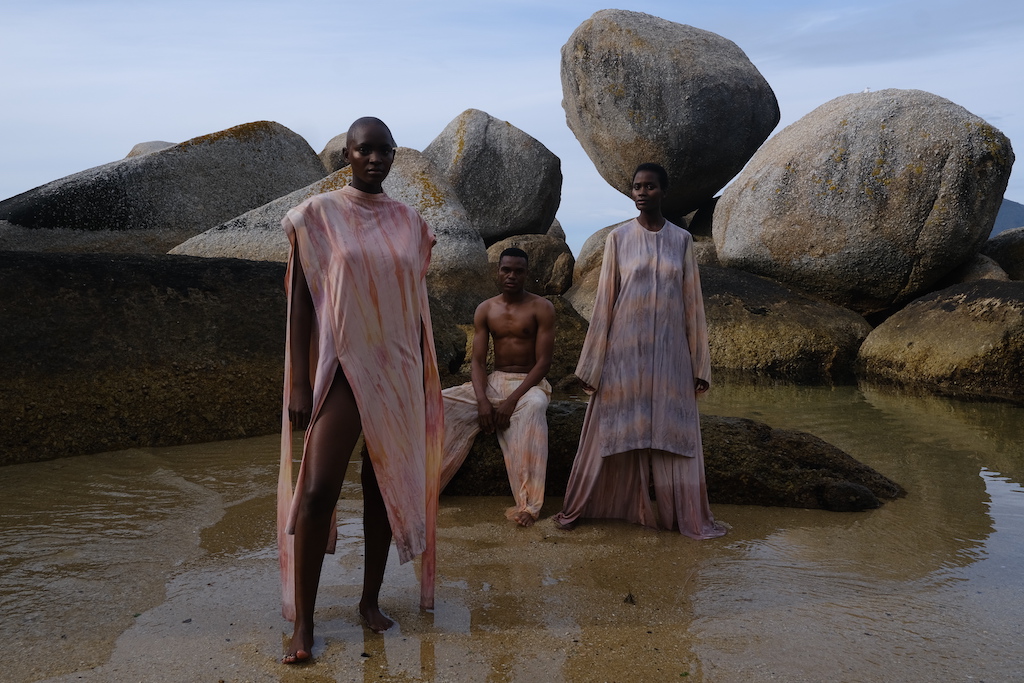Growth, community, and connection: A conversation with The Folklore

Read this article in French, German, Portuguese, Spanish, or Japanese.
It’s not every day that a company’s mission is as well suited for the current moment as that of The Folklore’s, an NYC-based multi-brand e-commerce site dedicated to delivering high-end contemporary African fashion and lifestyle products to customers around the world. Amid both a global pandemic and an international movement to champion Black businesses and creators, The Folklore is about more than selling designer clothes online. It’s about building connection and making space for communities that have been historically left out on the sidelines.
To learn more, we sat down with Amira Rasool, Founder of The Folklore, to explore why she started the company, where she’s seeing the biggest traction, and how her expanding team is using Asana to reach the next stage of growth. Here’s what she had to say.
Q: What inspired you to found The Folklore?
A: I was inspired to start The Folklore after my first visit to Africa with two of my friends when I was a senior at Rutgers. We spent a lot of time at markets and small boutiques, and I found all of these amazing designers that we’d never heard of. I bought some items and wore them when I came back to New York. Everyone kept asking me where I got them because they wanted to buy them. But when I looked online, I couldn’t find any sites that carried the designers.

After I graduated, I started working at V Magazine as a Fashion Coordinator. However, I kept thinking back to all those incredible brands in Africa. There were also a lot of articles at the time declaring Africa’s luxury industry, with all of these amazing talents coming out of Nigeria, South Africa, and the Ivory Coast. After seeing this coverage and continuing to think about how I couldn’t find these designers online, I decided I wanted to build a platform for Africa and the diaspora’s luxury industry.
I then applied for a Master’s program at the University of Cape Town. While going to school, I flew around Africa and met with designers to learn what they needed from an e-commerce platform and to distribute to luxury customers around the world. From this research, The Folklore was born.
Q: What is The Folklore’s mission?
A: From the beginning, The Folklore has been about community and connection. Our goal is to find ways to economically uplift Black people in Africa and the diaspora, recognizing that a lot of the reasons why these talented designers don’t have huge budgets is because we’ve been marginalized for so long. My passion, as someone who studied African American studies in undergrad and then got my Master’s in African studies, is recognizing how important Black people’s economic uplift is.
Q: Since many of your designers haven’t sold internationally before, what steps do you take to set them up for success?
A: About 75% of our designers are new to selling outside of their country, so we help them with pricing for the international market. We also help them develop sales sheets listing all of their products and connect them with third-party marketplace platforms, collaboration opportunities, influencers, and the press.
Essentially, we help them with whatever they need, even if it’s just advice to ensure they aren’t being taken advantage of and getting the best deal possible.

Q: Switching gears a bit, how have you had to adjust your plans and pivot your strategy for The Folklore as a result of COVID-19?
A: We used to do a lot of pop-up shops, so we needed to figure out ways to engage with our community better online. I brought on new team members to spearhead these projects, and this growth is really what prompted us to start using Asana. With multiple new employees at The Folklore, we needed to track what everyone was doing.
At the beginning of COVID-19, we hosted a virtual event called the Drawing Board to raise money for brands in Africa that were economically impacted by the virus. For the event, editors and designers spoke to our community, and we had people tune in from around the world. This was also a great way to share more about The Folklore: we’re about community building and connecting people. We’ve also been interviewing different artists, architects, interior designers, and musicians on our social media channels and our blog that align with The Folklore lifestyle and image. Our community has loved this!
Q: What have been the most rewarding and challenging aspects of pivoting your focus?
A: The most rewarding part has been seeing the payoff of all our hard work. For the first nine months of The Folklore, I did everything myself. As we’ve grown our team and started receiving more press attention, it’s been nice to see people acknowledge that we’ve built something great.

On the flipside, the most challenging part has been finding the best way to streamline things and create processes across departments. In the span of six weeks we’ve brought on three additional people and are trying to figure out the best way to do things like managing inventory.
Q: What impact have these business changes had on the way your team works and stays connected?
A: As we’ve scaled we’ve had to develop a lot of internal processes like I mentioned. And I’m also having to communicate with people more than I’m used to. One practice I’ve recently adopted is scheduling all my external calls on Monday, Wednesday, and Friday. On Tuesdays and Thursday, I focus exclusively on getting work done and will only talk to my team. This helps me stay productive and avoid video call fatigue.
Q: That’s a great tip. You also mentioned that you began using Asana in the past few months. Why did you begin using the platform and how are you using it?
A: Our digital producer, Raven, had used Asana before and recommended it. When we brought on new team members, we were still trying to manage everything in Google Drive but it wasn’t scalable. I started tinkering with Asana one weekend, and I was like, “All right, Raven, you were right. We should have been doing this a long time ago.” Since then, it’s been great.
Q: What impact has using Asana had on you and your business during this time of rapid change?
A: Asana has really helped us stay organized and on track with our priorities. Each month, we define our expectations, and then we use Asana to track our work to make sure we hit our goals. Our team also likes that Asana allows each of us to work in the way that best suits our preferences, whether it’s a task list, bird’s eye calendar view, or board view. I personally like lists!
Asana also allows me to separate the work I do for The Folklore from the work I do as a freelancer writer. It holds me accountable, too. When I see a red due date, it lights a fire under me to complete it. Also, seeing the number of tasks I completed in a day is really motivating.
Q: In light of all the changes you and your team have navigated recently, how are you thinking about what’s next for The Folklore?
A: We’re going to be growing from the 30 brands that we currently have on our platform to over 60 by the end of the fall. We’re also going to be launching beauty in November, which is going to be really exciting. And we are really focused on finding other ways to collaborate with major companies to bring visibility and economic opportunity to the brands that we work with. In a recent article, I declared that I’m building The Folklore to be the LVMH of Africa, and I’m embracing that vision for our company.
We’re inspired by customers like The Folklore who are using Asana to achieve their missions. See what teams around the world are doing with Asana.

